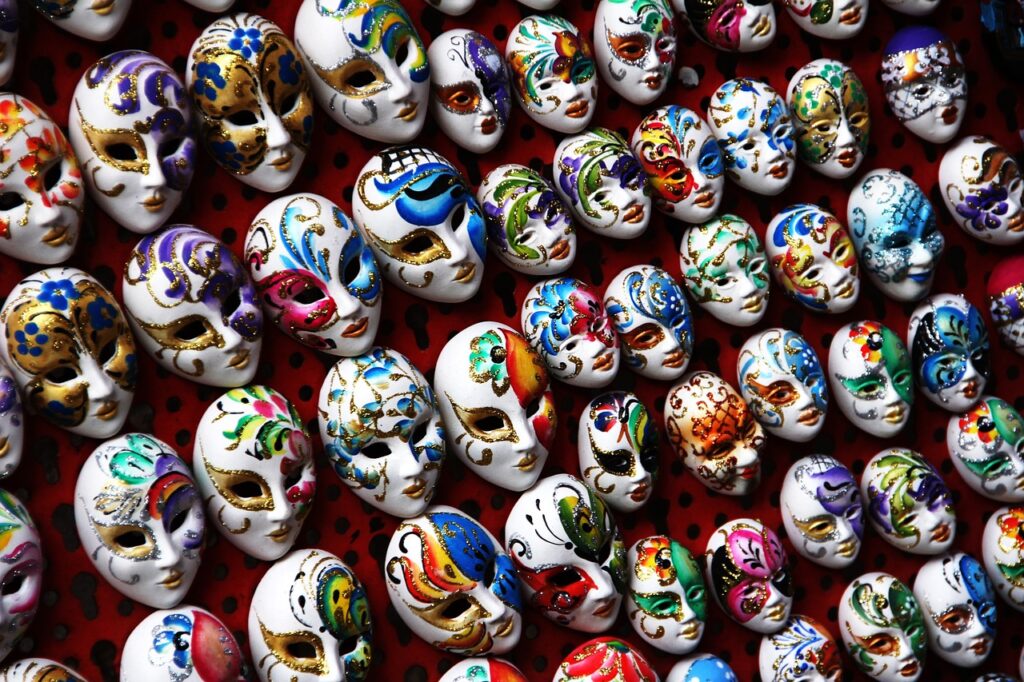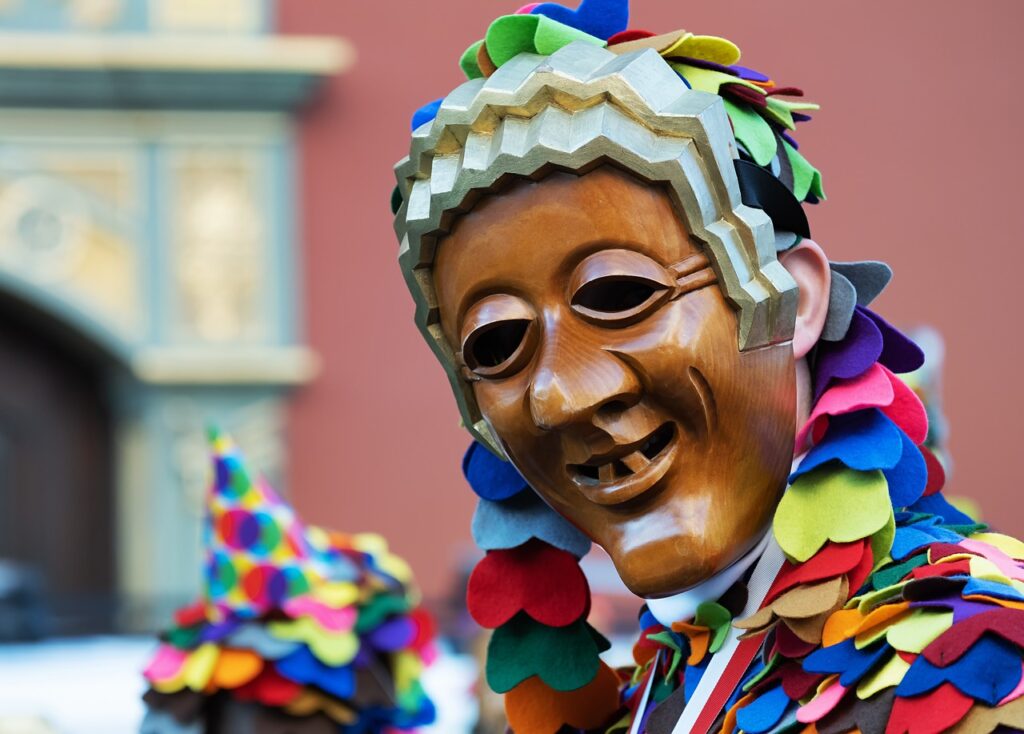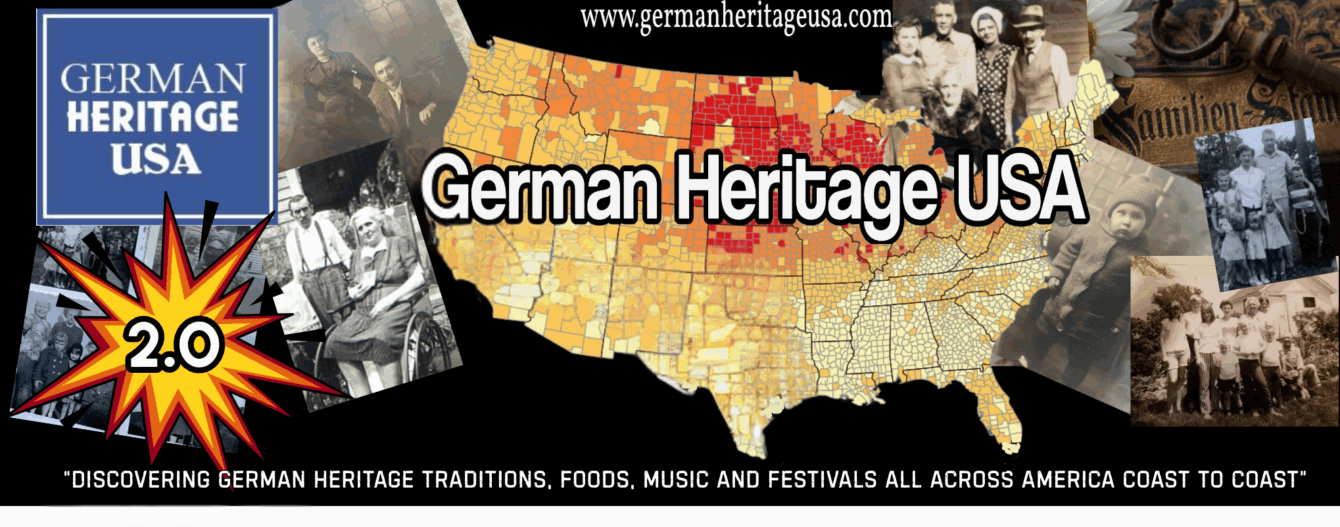Fasching & Fastnacht: How Germany Begins Karneval on November 11th at 11:11 Every Year
GERMAN HERITAGE USA | AFFILIATE DISCLAIMER: This post may or may not contain affiliate links which means we may receive a commission for purchases made through links. We will only recommend products that we have personally used or that we truly trust. Learn more on our Private Policy and Disclaimer Page located under our Terms Of Service tab above.
Did you know Germany’s carnival season lasts four months? It’s called Fasching, Karneval, or Fastnacht. It starts on November 11th at 11:11 a.m. every year. This tradition comes from German Heritage, going back to before the Romans.
Fasching is like Mardi Gras in Germany, a time of fun before Lent. The big celebrations happen in February. But the carnival spirit starts in November, getting everyone ready for months of fun.

In Cologne, the Karneval has been celebrated since 1234. Mainz also has lively Fastnacht celebrations. No matter where you are in Germany, you’ll find colorful parades and people eager to celebrate until Ash Wednesday.
Key Takeaways
- Carnival season in Germany starts on November 11th at 11:11 a.m.
- The celebration is known by different names: Fasching, Karneval, and Fastnacht.
- Carnival traditions in Germany date back to pre-Roman times.
- Each region has its own unique customs and celebrations.
- The carnival season lasts four months, climaxing before Lent.
- Major events include Altweiber Fastnacht, Rosenmontag, and Fastnachtdienstag.
The Origins of German Carnival Traditions
German carnival traditions have a long history, dating back centuries. They started in pre-Roman times and grew through the Middle Ages. Today, they are lively celebrations.

Pre-Roman and Medieval History
Ancient Germanic tribes wore masks and costumes for rituals before the Romans arrived. In medieval times, these disguises were for fun and to mock rulers safely. The first Karneval parade was in Cologne in 1341, a big step in its history.
Religious Significance and Lenten Connection
The start of German carnival is on November 11th at 11:11 AM. It lasts until Ash Wednesday, filled with feasting and fun before Lent. In Catholic areas, Karneval was a way to enjoy life before fasting.
Evolution from City Festivals to National Celebration
Karneval started in cities like Mainz and Speyer, with Cologne joining by 1234. It grew across Germany, especially in western areas. Now, millions join in, with Cologne’s parade attracting over 1.5 million viewers.
| Region | Celebration Name | Notable Features |
|---|---|---|
| Rhineland | Karneval | Large parades, costume balls |
| Bavaria | Fasching | Venetian influence, wooden masks |
| Swabia | Fastnacht | Distinctive fool characters |
Karneval has grown into a cultural event that brings people together. It mixes local traditions with national pride. The tradition keeps changing, tackling new issues while keeping its roots.
Why November 11th at 11:11?
The november 11 11:11 germany celebration is deeply rooted in history. It marks the start of the carnival season, especially in Cologne. This date is chosen for its significance in world history.
World War I ended on November 11, 1918, at 11:00 AM. This moment, known as Armistice Day, brought relief and joy to Europe. Germany, heavily impacted by the war, made this date a part of its culture.
Why 11:11 is significant in Germany is more than just remembering the war’s end. It symbolizes new starts and the shift from somber to joyful. The carnival season, beginning at this time, shows Germany’s strength and ability to find joy after hard times.
“The eleventh hour of the eleventh day of the eleventh month” – a phrase etched in history, now sparks festivities across Germany.
The number 11 is special in German carnival traditions. It’s seen as a “fool’s number,” symbolizing fun and excess. Starting at 11:11, the celebration fully embraces this spirit.
| Date | Historical Significance | Modern Celebration |
|---|---|---|
| November 11, 1918 | Armistice signed, ending WWI | Carnival season begins |
| 11:00 AM | Hostilities ceased | Preparations for festivities |
| 11:11 AM | Symbolic time of new beginnings | Official start of carnival celebrations |
Regional Names and Celebrations Across Germany
Germany’s carnival season is a colorful mix of traditions. Each region adds its own special touch. The debate over fasching vs karneval vs fastnacht shows Germany’s celebration diversity.
Fasching in Bavaria and Austria
In Bavaria, Fasching is the main event. It starts on November 11th at 11:11 AM and ends with big parades before Ash Wednesday. People wear fancy costumes and masks, making the streets come alive with color.
Karneval in Cologne and Rhineland
Cologne’s Karneval is famous worldwide. The city goes wild when karneval in Cologne November 11 begins. The “crazy days” before Lent are the highlight, especially the Rose Monday parade.
Fastnacht in Mainz and Surroundings
Mainz celebrates Fastnacht with a twist. Political satire is a big part of the fun. The city’s “Schwellköpp” (swollen heads) caricatures are a favorite tradition.
| Region | Name | Unique Feature |
|---|---|---|
| Bavaria | Fasching | Elaborate costumes |
| Cologne | Karneval | Rose Monday parade |
| Mainz | Fastnacht | Political satire |
Each region’s celebration shows Germany’s rich culture. It brings people together in joyous pre-Lenten festivities.
German Heritage: The Cultural Significance of Carnival Season
Carnival season is a big deal in German culture. It goes back to the Middle Ages. In Germany, it’s known as Fasching, a time of unique customs and rituals.
Traditional Customs and Rituals
The German Karneval starts on November 11th at 11:11 AM. It’s called the “Fifth Season.” The fun stops only for Advent and Christmas.
Historical Preservation of Festivities
Fasching in Germany keeps its history alive but also changes with the times. Since the early 19th century, it’s been about poking fun at those in power. Each region has its own twist, like Fasching in the south and Karneval in the north.
Modern Interpretations of Ancient Traditions
Today, Karneval mixes old and new. It keeps its Christian roots but also adds modern touches. The parades, costumes, and shouts of “Alaaf!,” “Helau!,” or “Ahoi!” show off German culture.
| Region | Name | Notable Traditions |
|---|---|---|
| Rhineland | Karneval | Rose Monday parades |
| Bavaria | Fasching | Masked balls |
| Mainz | Fastnacht | Political satire floats |
The Role of Carnival Royalty
The german carnival season start date marks the beginning of a unique tradition. On November 11th at 11:11 am, the “fifth season” kicks off, lasting three months until Lent. A key feature of karneval traditions germany is the appointment of carnival royalty to oversee the festivities.
In Cologne, a triumvirate reigns over the merrymakers. This royal court consists of a prince, maiden, and peasant – all traditionally played by men. These figures make up to 400 appearances during the carnival season, embodying the spirit of revelry and mischief.
The concept of carnival royalty dates back to 1883 when Cologne established its Carnival Prince and Maiden. This tradition spread to other regions, with each area developing its own unique twist on carnival leadership.
“Carnival remains resilient even during challenging times like wars, economic crises, and pandemics,” says Christoph Kuckelkorn, president of Cologne’s Carnival festival committee.
These royal figures play a crucial role in kicking off street festivals and parades. They symbolize a temporary inversion of power, allowing revelers to mock current authorities through speeches, floats, and costumes. This satirical element is a core part of German carnival celebrations, offering a unique blend of tradition and social commentary.
Traditional Carnival Greetings and Calls
Karneval traditions in Germany are filled with unique greetings and calls. These are called “Narrenrufe” and are key to celebrating Karneval. Each area has its own special call, making the festivities even more colorful.
Regional Narrenrufe Variations
The variety of Narrenrufe shows Germany’s diverse Karneval celebrations. In Kaiserslautern, people say “Kalau!” Wiesbaden and Mainz shout “Helau!” Meanwhile, Cologne and Bonn say “Alaaf!” Rottweil in Baden-Württemberg is known for “Hu Hu Hu!”
Proper Usage and Cultural Etiquette
Using the right Narrenruf is essential for enjoying Karneval traditions in Germany. It’s not just about shouting; it’s about connecting with local culture. Visitors should learn the correct call for each city they visit during the carnival season.
Famous Local Carnival Cries
Some Narrenrufe are famous across Germany. Cologne’s “Alaaf!” is well-known, heard by over a million visitors. In Mainz, “Helau!” is shouted out, where giant papier-mache figures parade. Rottweil’s “Hu hu hu!” is heard with dancers in wooden masks, keeping ancient traditions alive.
| City | Narrenruf | Unique Feature |
|---|---|---|
| Cologne | Alaaf! | 1 million visitors |
| Mainz | Helau! | 25kg Schwellköpp figures |
| Rottweil | Hu hu hu! | Hand-carved wooden masks |
Major Carnival Events and Celebrations
The start of Karneval season in Germany is a whirlwind of festivities. The german carnival season starts on November 11th, but the main events are in February. Let’s look at the key celebrations that make this time special.
Altweiber Fastnacht
Altweiber Fastnacht, or Women’s Carnival, happens on the Thursday before Ash Wednesday. On this day, women take over cities, cutting men’s ties and storming town halls. It’s a fun reversal of roles that sets the stage for the wild days to come.
Rosenmontag Traditions
Rosenmontag, or Rose Monday, is the highlight of carnival. It falls on February 12th and features grand parades with floats, dancers, and bands. Cities like Cologne show off their most vibrant displays, attracting millions.
Fastnachtdienstag Festivities
Fastnachtdienstag, or Shrove Tuesday, is the last day of fun. Costume balls reach their peak, with people wearing their most creative outfits. As midnight comes, some regions burn the Nubbel, a straw figure that marks winter’s end.
| Event | Date | Key Features |
|---|---|---|
| Altweiber Fastnacht | Thursday before Ash Wednesday | Women take over, tie-cutting |
| Rosenmontag | February 12 | Grand parades, floats |
| Fastnachtdienstag | February 13 | Costume balls, Nubbel burning |
These events mix tradition with modern fun, featuring satire, costume parties, and parades. Each region adds its own twist, making German carnival a diverse and unforgettable experience.
Costumes and Masquerade Traditions
Costumes are key in Germany’s fasching, karneval, and fastnacht. People wear crazy outfits during these times. In Bavaria, the Maschkera tradition uses heavy wooden masks from 500 years ago.
Some masks in Upper Bavaria go back to the 1790s.
Karneval in the Rhineland has its own style. Narrenzunft groups, started in the 1920s, wear colorful one-piece outfits made from scraps. These outfits mix tradition with fun.
Mask-making is a big deal in Germany’s carnival. Bryan Berenson, a Master Carver in the U.S., learned in Austria. He makes custom masks for performers, keeping this tradition alive.
The Muller Fasching Verein Nordamerika in Milwaukee keeps German traditions alive in the U.S. They perform dances and customs from Tyrol, showing fasching’s global impact.
| Region | Costume Style | Notable Features |
|---|---|---|
| Bavaria | Maschkera | Heavy wooden masks, some from 1790s |
| Rhineland | Narrenzunft | Colorful one-piece outfits made from fabric scraps |
| Swabia | Fastnacht | Elaborate wooden masks passed down generations |
The Funkenmariechen Dance Tradition
The Funkenmariechen, or “Sparkling Maries,” are a key part of German culture and Karneval. This lively dance has a history almost 200 years long. It started in the early Karneval celebrations of Cologne.
Historical Origins Under Napoleon
The first “Mariechentanz” was mentioned in 1823, after Napoleon left the Rhineland. At first, men wore costumes like Napoleon’s army uniforms. In 1869, the Tanzmariechen became a dance group, adding fun to Karneval parades.
Modern Performance Practices
Now, Funkenmariechen are female dancers. They mix march dance, ballet, and acrobatics in their routines. Since 1986, they practice often and compete in Gardetanz competitions all year.
Their performances are a big part of Karneval in Germany. They show the lasting charm of this unique German tradition.
Cultural Impact and Evolution
The Funkenmariechen tradition has changed a lot over the years. Women took over in the 1930s. Since the 1950s, ballet masters have added new moves.
This dance is a big part of Karneval culture. Most clubs have their own dance group. As Karneval grows in Germany, the Funkenmariechen tradition shows the spirit of German festivity.
FAQ
When does the German carnival season officially begin?
The German carnival season starts on November 11th at 11:11 a.m. This marks the beginning of the festivities. The main celebrations happen in February before Lent.
What are the different names for carnival in Germany?
In Germany, carnival is known by different names. It’s called Fasching in Bavaria and Austria. In Cologne and the Rhineland, it’s Karneval. Mainz and its areas call it Fastnacht.
Why is the number 11 significant in German carnival traditions?
The number 11 is special in German carnival, especially in Cologne. The exact reasons are unclear. But, the date (11/11) and time (11:11) are deeply rooted in carnival culture. They symbolize the start of the festive season.
What are some traditional customs during German carnival?
Traditional customs include handing over city keys to fools and appointing carnival royalty. There are costumed parades and masked balls. The burning of the Nubbel (a straw doll) marks the end of carnival in some areas.
What is the significance of costumes during Fasching?
Costumes are key in Fasching celebrations. They let people change their identities and enjoy the revelry. The more creative the costume, the better it’s received.
What is a Narrenruf?
A Narrenruf is a traditional carnival greeting. It varies by region. For example, “Helau!” is used in Mainz, and “Alaaf!” in Cologne. Using the right Narrenruf is important for joining in local festivities.
Who are the Funkenmariechen?
Funkenmariechen, or “Sparkling Maries,” are dancers at every carnival parade. This tradition started during Napoleon’s rule. Now, it’s a key part of carnival culture, featuring choreographed dance shows.
What happens on Rosenmontag?
Rosenmontag, or Rose Monday, is a big event with parades, floats, dancers, and bands. It’s known for its political satire. It’s a highlight of the carnival season.
How does German carnival relate to Lent?
German carnival is a time of indulgence before Lent. It’s a period of celebration before the fasting of Lent. It’s a time to enjoy festivities before Lent’s solemnity.
How do different regions in Germany celebrate carnival?
Each region in Germany celebrates carnival uniquely. Cologne is famous for its carnival. Mainz is known for its satire and humor. Bavaria and Austria have their own Fasching traditions.
Source Links
- German Carnival(Fasching) Explained – https://thefrankfurtedit.com/german-carnival-fastnacht-all-you-need-to-know/
- Germany’s fifth season: Everything you need to know about Fasching – https://www.army.mil/article/263696/germanys_fifth_season_everything_you_need_to_know_about_fasching
- Karneval History | Gamga – http://www.gamga.org/karneval-history/
- Festivals of Fools – https://americangerman.institute/2022/02/festivals-of-fools/
- Armistice – https://www.theworldwar.org/learn/about-wwi/armistice
- History of Veterans Day – U.S. Department of Veterans Affairs – https://department.va.gov/veterans-day/history-of-veterans-day/
- German Holidays and Celebrations – https://www.expatrio.com/about-germany/german-holidays-and-celebrations
- German Festivals and Holidays | TOTA – https://www.tota.world/article/1654/
- German Culture: Facts, Customs, Traditions, and Things To Know – https://www.studying-in-germany.org/german-culture/
- The Historical Roots of Carnival in Germany – https://www.dw.com/en/the-historical-roots-of-carnival-in-germany/a-405933
- The Fifth Season: Origins And Significance Of German Carnival – https://thehistorianjournal.wordpress.com/2019/12/11/the-fifth-season-origins-and-significance-of-german-carnival/
- Ringing in Carnival: A 2,000-year-old tradition – https://www.dw.com/en/ringing-in-carnival-a-2000-year-old-tradition/a-63707828
- The fifth season – jesters, music and dancing – https://www.goethe.de/ins/id/en/kul/ges/21159744.html
- Carnival – https://en.wikipedia.org/wiki/Carnival
- Alaaf and Helau! Carnival in Germany – https://www.dw.com/en/alaaf-and-helau-carnival-in-germany/g-18245830
- Germany’s fifth season: Everything you need to know about Fasching – https://www.army.mil/article/273176/germanys_fifth_season_everything_you_need_to_know_about_fasching
- Cologne Carnival – https://en.wikipedia.org/wiki/Cologne_Carnival
- Everything You Need to Know about Carnival in Germany – https://militaryingermany.com/everything-need-know-carnival-germany
- Carnival in Germany, Switzerland and Austria – https://en.wikipedia.org/wiki/Carnival_in_Germany,_Switzerland_and_Austria
- The Maschkera… The Story Behind the German Fasching Masks – https://germangirlinamerica.com/german-fasching-masks/
- Carnival – https://www.study-in-germany.de/en/germany/discover-germany/carnival-in-germany/
- From Karneval to Fasnacht: Unmasking Germany’s Carnival Traditions – Office Holidays Blog – https://blog.officeholidays.com/festivals/from-karneval-to-fasnacht-unmasking-germanys-carnival-traditions/
- Tanzmariechen- Those Fabulous Karneval Dancers! – https://germangirlinamerica.com/tanzmariechen-those-fabulous-karneval-dancers/
- Carnival tradition in Germany – Culture Mondial – http://culture-mondial.com/carnival-tradition-in-germany/
